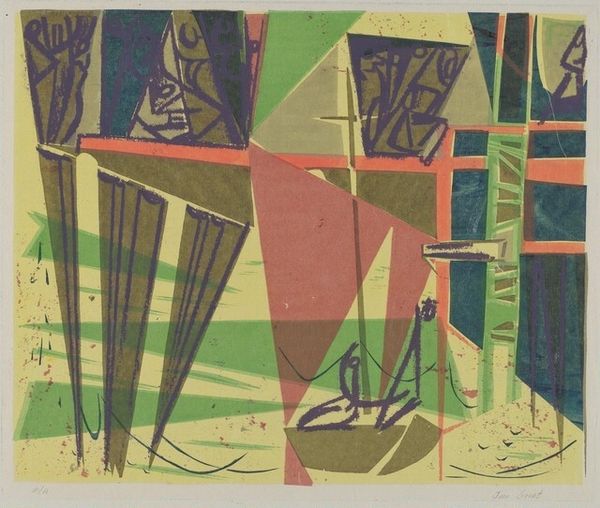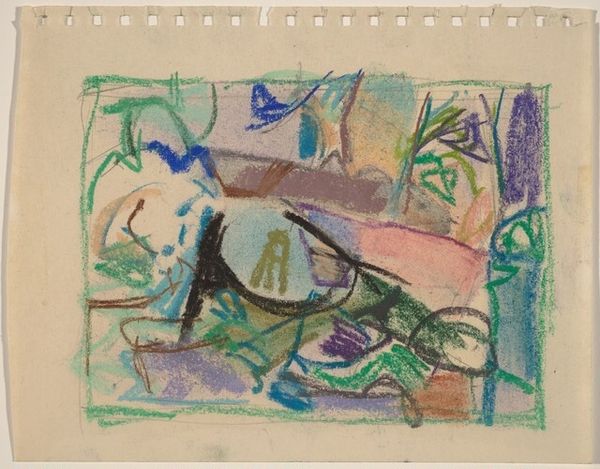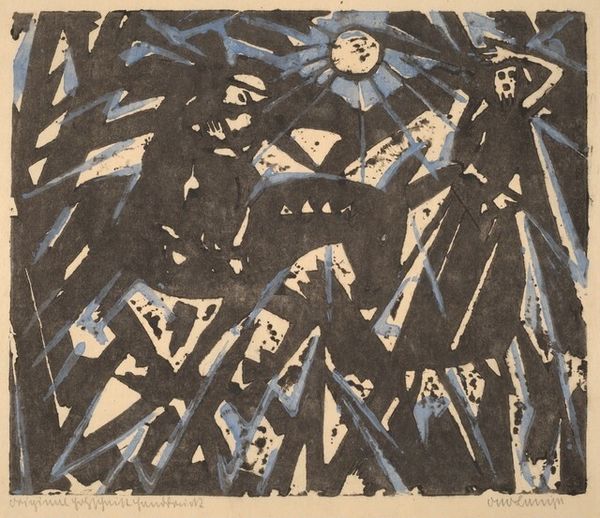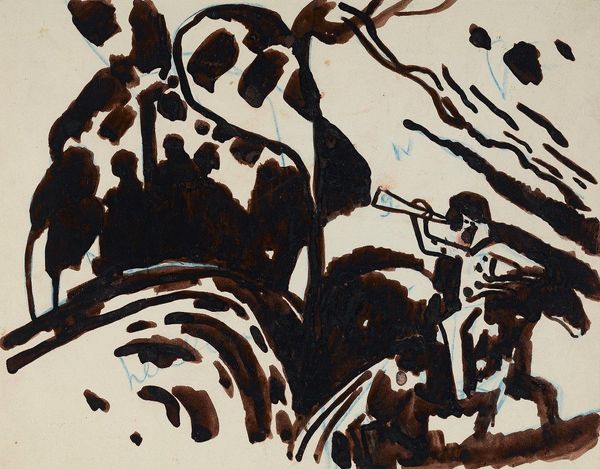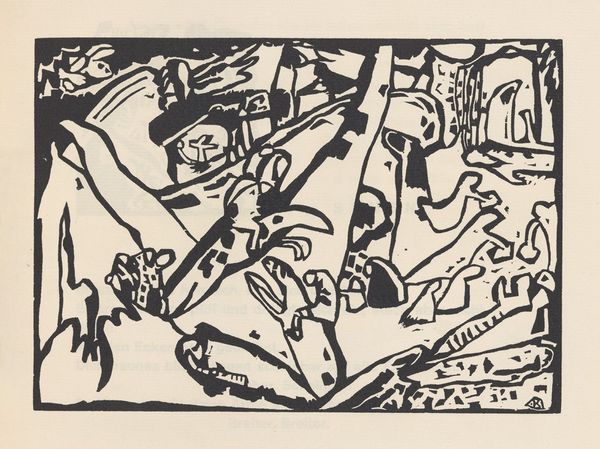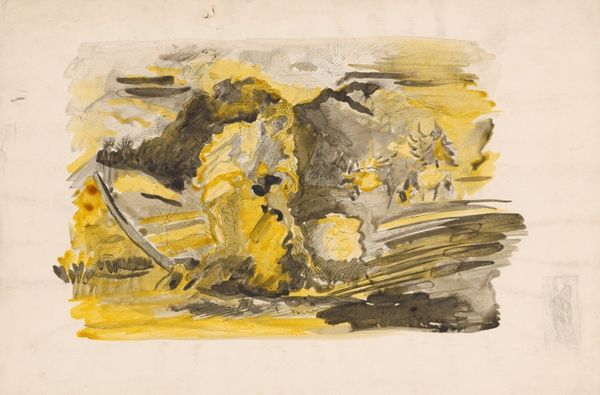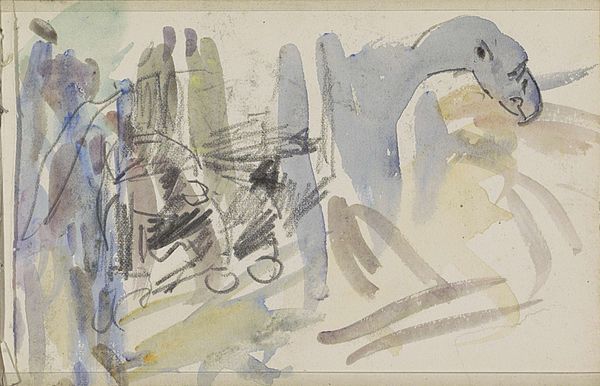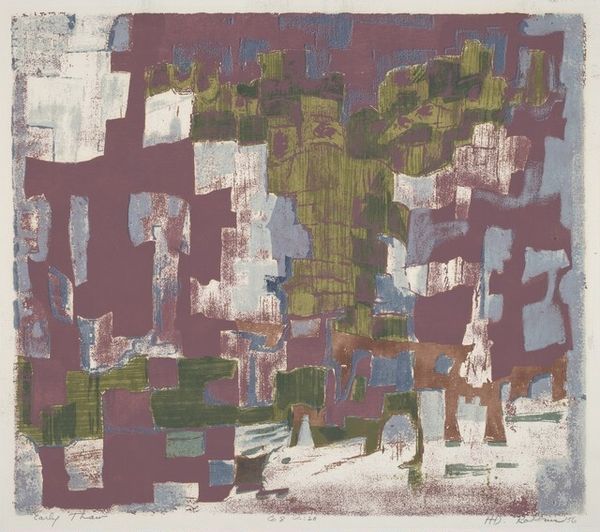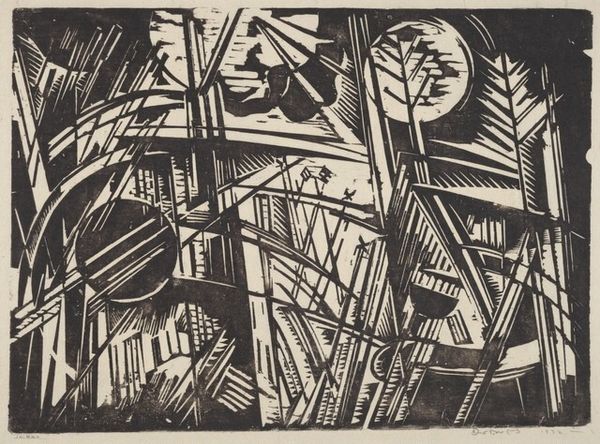
Dimensions: overall: 45.7 x 52.7 cm (18 x 20 3/4 in.)
Copyright: National Gallery of Art: CC0 1.0
Editor: So, here we have "Garden," a mixed-media print created by George Bunker in 1961. It’s a really intriguing composition; a collection of angular shapes form an abstract garden space with tranquil browns, greens and teals. It almost feels like you’re peeking through foliage. How do you interpret this work within its historical context? Curator: That feeling of peeking through foliage is crucial. The early 1960s witnessed an intense fascination with landscape art in public art initiatives. “Garden,” while abstract, participates in that dialogue. Bunker presents a purified landscape. What is missing, of course, are the human figures that dominated earlier landscape paintings. Where does the social engagement with nature manifest? Editor: It's interesting that you bring up that absence. I hadn't considered how the lack of figures impacts the piece. It feels less about specific interaction, more about an immersive visual environment. A scene accessible to all. Curator: Precisely. And accessible by what means? A print. We also have to examine its material status. Multiple impressions are to be disseminated among potentially countless homes. The garden here then, is one everyone might come to inhabit. It gestures towards a democratization of artistic appreciation and environmental engagement. Don’t you think? Editor: I see what you mean; a mass-produced work democratizing the aesthetic experience, transforming private spaces into venues for art engagement. Curator: Indeed, think of it within the burgeoning print market of the era. Accessible art for accessible enjoyment. "Garden" subtly reshapes the political landscape of artistic consumption, engaging the domestic space. It proposes, however subtly, that gardens are for all. Editor: Wow. I really missed the significance of it being a print. Thank you for providing context regarding accessible art for all! Now when I look at “Garden," I will think of Bunker creating not just art, but a piece intended to reshape culture and invite an ever growing public. Curator: And that’s precisely what art history aims to reveal.
Comments
No comments
Be the first to comment and join the conversation on the ultimate creative platform.

